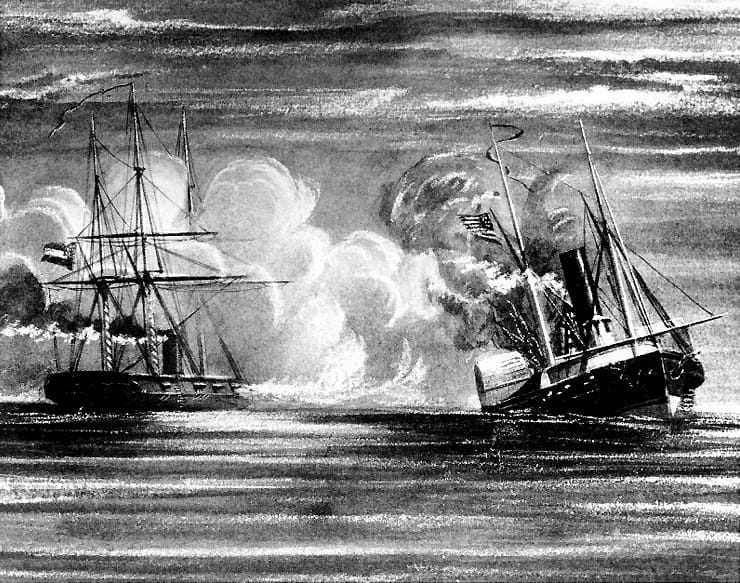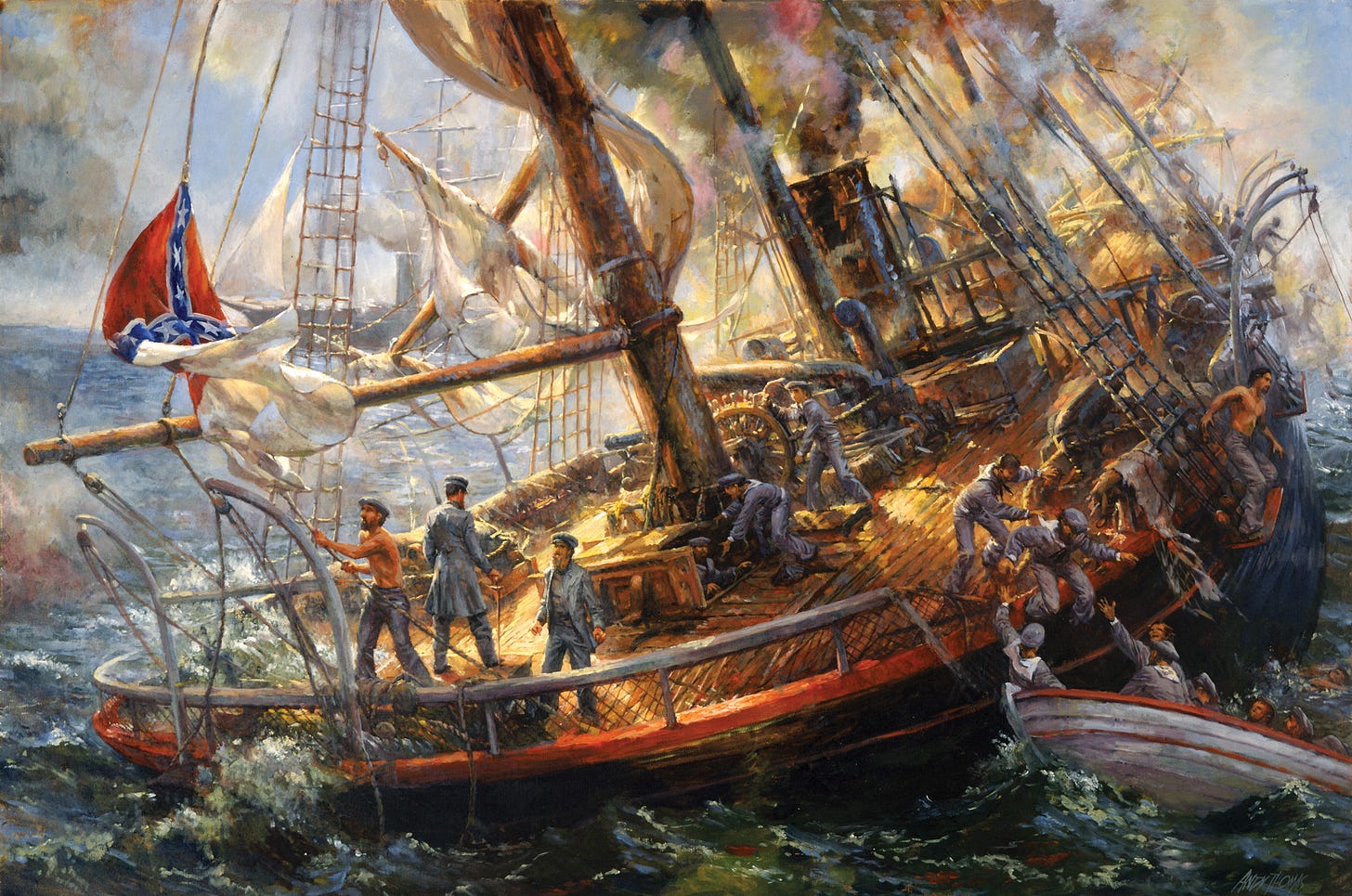On the evening of January 11, 1863, a clever naval deception unfolded off the coast of Galveston, Texas, showcasing the ingenuity of Confederate Captain Raphael Semmes and his crew aboard the CSS Alabama. This event would prove to be a significant moment in naval warfare during the American Civil War. As dusk settled over the Gulf of Mexico, the Alabama, a formidable Confederate commerce raider, approached the Union blockade squadron off Galveston. Captain Semmes, known for his tactical acumen, devised a plan to lure out a single enemy vessel from the protection of its fleet. The Alabama, disguising its true identity, sailed along the horizon, presenting itself as a tempting target for the Union forces.
The USS Hatteras, commanded by Lieutenant Commander Homer C. Blake, took the bait. As the Hatteras steamed towards the mysterious ship, tension mounted on both vessels. The Alabama maintained its ruse, even going so far as to hail the approaching Union ship and offer to send a boat for identification
This clever tactic allowed the Confederate vessel to close the distance without arousing suspicion. At the crucial moment, when the Hatteras was within optimal range, First Lieutenant John M. Kell of the Alabama revealed their true identity with a shout: "This is the Confederate States steamer Alabama!" Immediately following this declaration, he ordered his gun crews to open fire.
The ensuing battle was brief but intense. For thirteen minutes, the two ships exchanged cannon fire at close range. The Alabama's superior armament and Semmes' tactical positioning proved decisive. The Hatteras, originally a merchant steamer retrofitted for war, was ill-equipped for such a confrontation. As the battle concluded, the Hatteras was in flames, its engine disabled, and its hull breached. Lieutenant Commander Blake, recognizing the futility of further resistance, surrendered his ship. In a final act of naval chivalry, the Alabama's crew assisted in rescuing the Hatteras' men before the Union vessel slipped beneath the waves.
This engagement demonstrated the effectiveness of deception in naval warfare and highlighted the Confederate navy's ability to disrupt Union operations despite being outnumbered. The sinking of the Hatteras forced Commodore Henry H. Bell to call off the planned attack on Galveston, showcasing how a single, well-executed operation could have far-reaching strategic implications.





